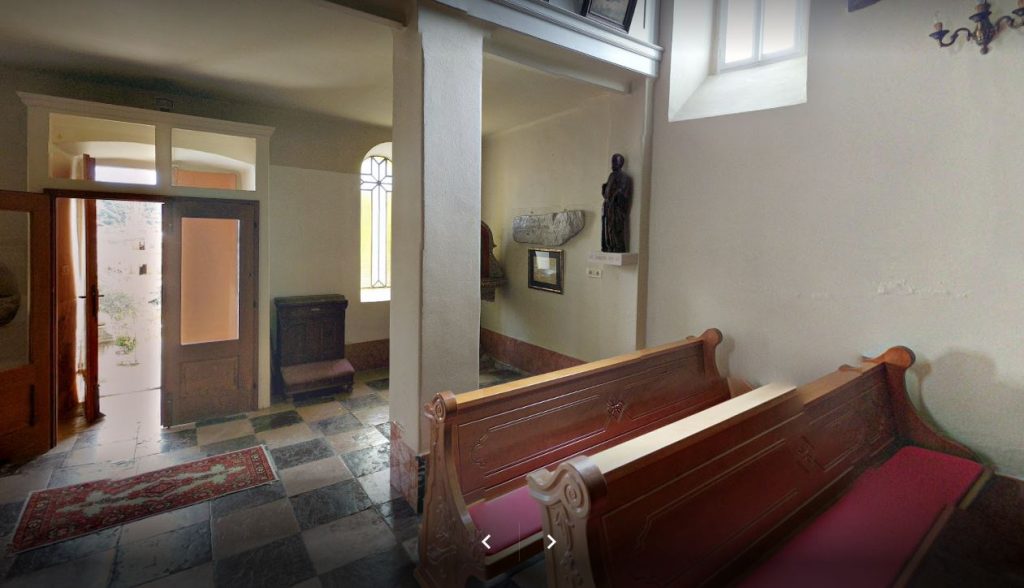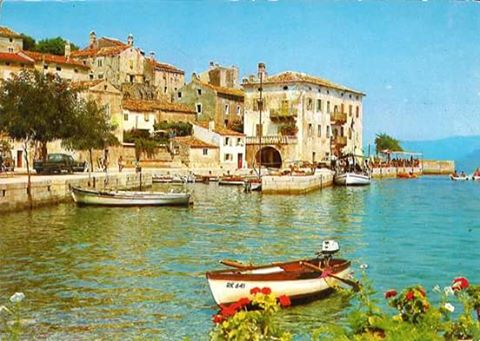
About Valun
Valun is a small picturesque fishermen’s and farmers’ village between two beautiful pebble beaches to the north of the city of Cres.
Gastronomy and particularly fish delicacies have put Valun on the map.
Its origins are related to the harbour of the old village Bućev the remnants of which were found near St Mark church.
St Mark church (crkva svetog Marka - na groblju, Bučevo)
In St Mark church was found the Valun Tablet from 11th Century : the Valun Table is one of the oldest Glagolitic monuments and is kept in the Parish church in Valun. Besides these landmarks, a collection of Glagolitic stone fragments located on the terrace of a today’s restaurant are also worth seeing: this collection shows copies of the oldest Glagolitic inscriptions from Istria, Kvarner and Dalmatia.
Church St Mary (župna crkva B. D. Marije od sv. Krunice, in past crkva sv. Tome)
In the centre of village Valun is placed church St Mary (blessing first Sunday in October). Place where the Valun Tablet is saved.
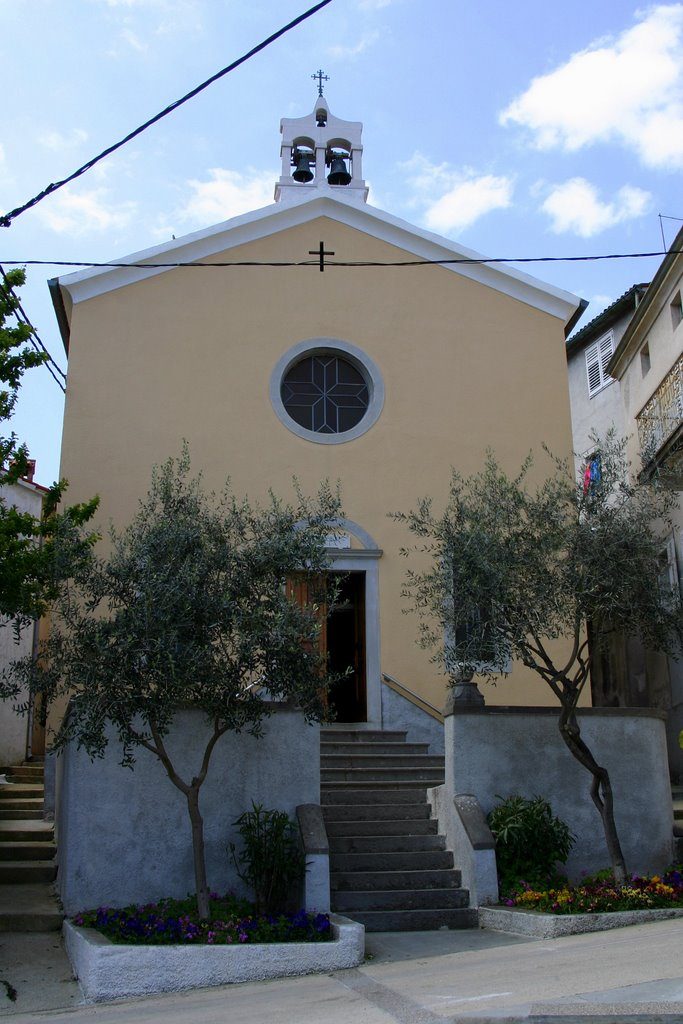
Valun Tablet
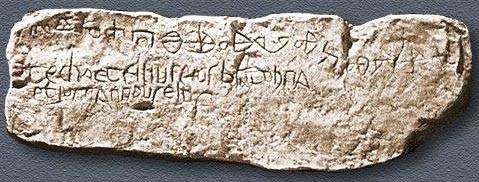
The Valun tablet (Croatian: Valunska ploča) is an 11th-century bilingual (Old Croatian and Latin) and digraphic (Glagolitic and Latin) tablet, originally serving the role of a gravestone, found at the graveyard in Valun on the island of Cres. It records that under the tablet three generations of one 11th-century Valun family rest in peace: the grandmother, her son and grandson (named Teha, Bratohna and Juna). Today, the Valun tablet is embedded in the wall of Saint Mary in Valun. Its bilinguality is important evidence of the coexistence of two ethnic and linguistic elements: old Romance and newly arrived Croatian. The Valun tablet is a natural tablet, unprocessed by a carver, of a type that can commonly be found on karstic territory and employed by peasants for e.g. tiling the ground. According to Fučić[1] it originally served as the marker of a shallowly dug grave at the church of Saint Mark in Bućevo above the present-day village of Valun on the island of Cres.
The text on Valun Tablet
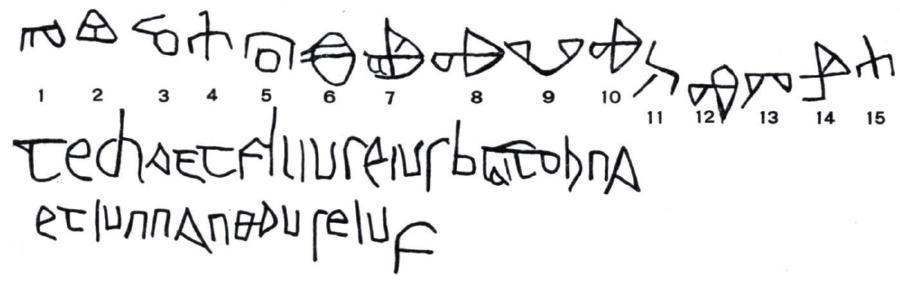
Latin and Croatian inscriptions of the Valun tablet.The tablet is equipped with a bilingual inscription: one in the Croatian language, carved in an older, rounded Glagolitic, and a Latin inscription, carved with Caroline.
Latin text
The Latin text can be easily read:
- TECHNA ET FILIUS EIUS BRATOHNA
- ET IUNNA NEPUS EIUS
It’s evident that the grave of 3 generations is in question, carrying old Croatian baptismal names. These are the grandmother Těha, her son Bratohna and her grandson Juna.
Glagolitic text
On the Glagolitic inscription, carrying the Old Croatian text, the names TĚHA and JUNA can easily be read, but BRATOHNA is missing. In the middle of the inscription 8 letters are found, two of which look unknown to Fučić, so he read the sequence as:[2]
| S | ? | ? | Ъ | V | Ъ | K | Ъ |
| 5 | 6 | 7 | 8 | 9 | 10 | 11 | 12 |
The unknown letter (6) is according to Fučić old Glagolitic ‘I’, with a duplicated horizontal line separating the upper element from the lower. As for the unknown letter (7), the diagonal line in the eye of the letter N (14) in the word JUNA has led Fučić as a lead to the diagonal line in the letter (7), and notice that a carver has made an obvious mistake, carving at the wrong place a following semivowel. Now, after the word TĚHA word SINЪ “son” can be read, which matches to FILIUS “son” from the Latin text—and in the remaining group of letters VЪKЪ one should assume contracted NU in order to read VЪNЪKU “grandson”, in order to match the word from Latin text.
The Glagolitic inscription of the Valun tablet is thus:
| T | Ě | H | A | S | I | N | Ъ | V | Ъ | (NU) | K | Ъ | JU | N | A | |||
| 1 | 2 | 3 | 4 | 5 | 6 | 7 | 8 | 9 | 10 | 11 | 12 | 13 | 14 | 15 |
Dating
Latin inscription in Caroline can date to 9th, 10th and 11th century.[2] Glagolitic inscription is of markedly rounded Glagolitic.
The types of semivowels, triangular Ě, V with semicircular joint, K with long lateral line—all unambiguously point to the 11th century.
More on Wikipedia
